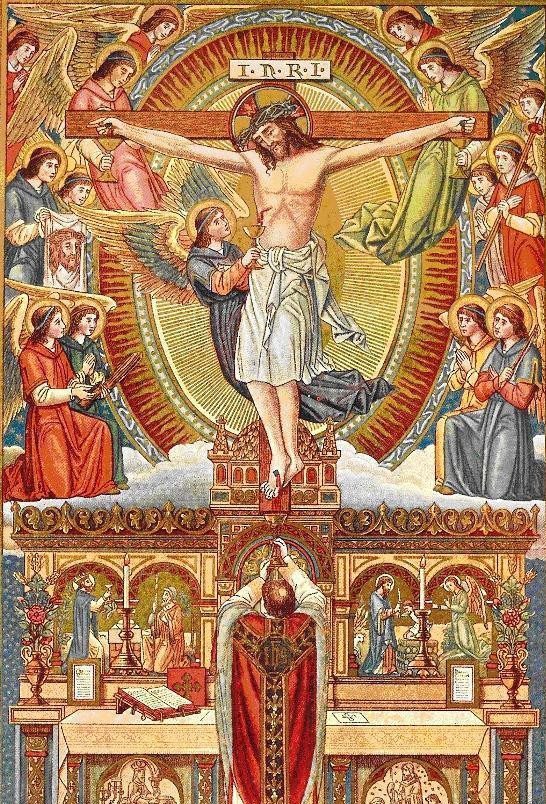It is the feast of Our Lady of Walsingham. From
The Catholic Herald:
In her painting of Our Lady of Walsingham (detail pictured above), the Virgin Mary is depicted dressed in Anglo-Saxon attire and holding up the Child Jesus. The image includes the coat of arms of St Edward the Confessor, a patron saint of England, and it depicts Lady Richeldis, who built a replica of the “holy house” of Nazareth following an apparition. The image also shows a frog in the place of the serpent, following a traditional Old English telling of Genesis in art.
The icon measures 75cm by 40.5cm (30in by 16in) and is made in a traditional way. It is painted with egg tempera on gesso mounted on a birch panel, before varnish was added for protection. The value of iconography over other art forms, according to Mrs de Pulford, is the clarity of the message the painter seeks to convey.
“Symbolism occurs in many art forms, and iconography is no exception,” she says. “But you don’t have to be able to unpick the symbolism to understand the painting because the imagery is so clear. It’s clear what is going on, it’s clear who the people are, and if you contemplate for long enough the meaning will become clear.”
She adds: “What I hope is that for those who see it the icon will inspire a renewed sense of the overwhelming generous love which inspired God to give Himself to the world, and Our Lady to reciprocate that love with her willing cooperation.”
Richard II’s dedication of England was carried out amid great political turmoil, with the intention that the country and her people would be set aside for the guidance and protection of Our Lady. The dedication coincided with the growth of the Shrine of Our Lady of Walsingham into one of the four great pilgrimage destinations of medieval Europe.
The shrine was destroyed during the Reformation and the original statute is believed to have been burned at Chelsea by Thomas Cromwell, Henry VIII’s henchman. But it was re-established in the 19th century and the English bishops decided in 2017 that a re-dedication was desirable.
The National Day of Dedication involves Catholics making a personal “Angelus promise” to God in union with the “yes” of Mary at the Annunciation. Communal acts of entrustment will be made in cathedrals at noon, renewing the vows of dedication made by Richard II. Schools are invited to join the re-dedication on Monday, March 30. (Read more.)





















